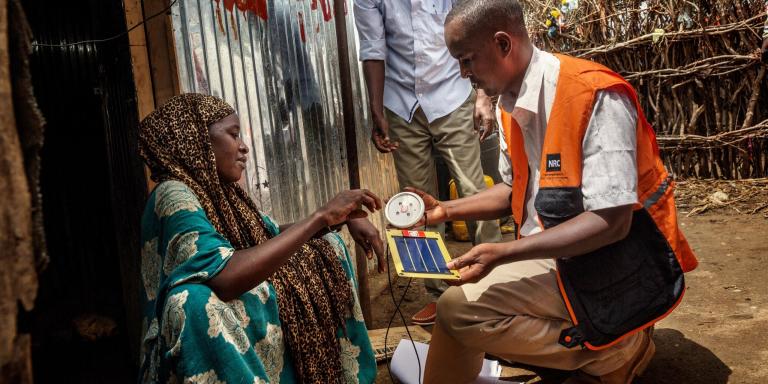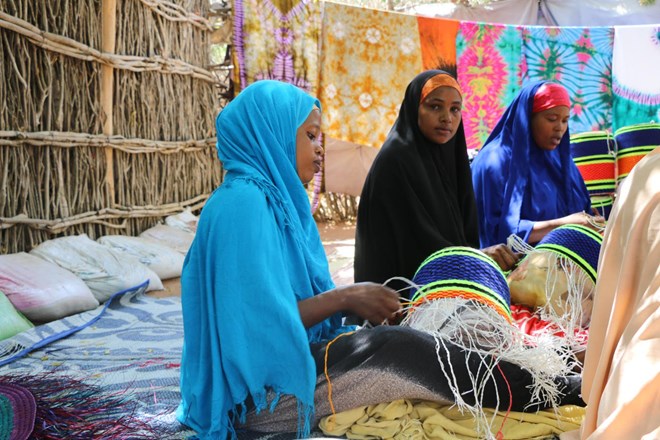Closing Dadaab now a distant shot-NRC


By Fauxile Kibet
Fewer Somali refugees have voluntarily chosen to return to Somalia, according to 2018 reports by the Norwegian Refugee Council (NRC), a situation which has jeopardized Kenya’s plans to close the Daadab refugee camp.
Further complicating this, according to Neil Turner, NRC’s country director in Kenya and Tanzania is that some of the current inhabitants of the world’s largest refugee camp were born in Kenya and have never set foot in the Somalia.
“Many of the inhabitants fled Somalia because of political instability in the ’90s and have settled in Dadaab’s camps after decades in Kenya,” explains Neil Turner.
An additional 100,000 Somali refugee fled the country in 2011 due to a devastating drought and famine, which forced the Kenyan government and the United Nations to set up supplementary camps to accommodate the influx.
The population in the camp currently is mostly Somali, with a few others from Ethiopia, South Sudan and the Democratic republic of Congo.
An earlier directive by the Kenyan government to close the camp and forcibly repatriate the refugees, currently over 260000 in 2016 was blocked by the country’s high court.
A judge in the Nairobi based court argued that such a decision would amount to group persecution, but the Kenyan government maintained that its decision was on security grounds.
“The camp had lost its humanitarian nature and had become a haven for terrorism and other illegal activities. Our interest in this case, and in the closure of Dadaab refugee camp, remains to protect the lives of Kenyans,” Kenyan government spokesman Eric Kiraithe said.

According to Turner, Kenya may not have been keen on closing the camp all together, but sending a message to the United Nations that more need to be done to manage the situation at the camp – which the East African country argued was straining both its economy and security status.
“It was not necessarily the Kenyan government’s intention to close Dadaab, but to send a message that the status quo from the Kenyan government’s perspective was not acceptable and that the UN refugee agency (UNHCR), in particular, should do more.”
The partnership between the UNHCR and Kenya to facilitate a voluntary return to Somalia by refugees increased between 2016 and 2017, in what Turner attributes says was “because of the government’s signals that Dadaab would be closed, and the uncertainty this caused among refugees.”
Turner argues that it is unlikely that the camp will close as two years since Kenya announced plans to forcefully repatriate Somali refugees, the camp is still operational
According to the humanitarian organization, over 75,000 Somalian refugees returned to Somalia through the voluntary return programme in the past three years, but around 33,000 returned in 2016 and a further 33,000 in 2017.
“Most of the Somalis who return are the people who arrived after the 2011 drought. They have more recent links to Somalia, while the people who arrived three decades ago are less likely to return as they have settled in Dadaab,” Turner explains.
The NRC country coordinator further adds that Somalian refugees who return to the Kismayo district without having lived there before, face difficulties in getting land, housing and property.
“For the ones who return to Dadaab, it is almost impossible to get renewed refugee documentation. Without documentation, people have no right to food, shelter and healthcare.”
REFUGEE BILL
In 2017, Kenyan legislators approved a refugee bill which was intended to create a more conducive environment for them to work and travel – but president Kenyatta did not signed it and was returned to parliament for further deliberation.
In his argument, president Kenyatta said that even though the bill relates to an important aspect of management of refugees in the country, there was no public participation in its formulation in accordance with Article 118 of the Kenyan constitution.
“In view of the foregoing, I recommend that the said Bill should be referred back to Parliament to allow for public input in accordance with the Constitution,” President Kenyatta said.
The bill also proposed that refugees or asylum seekers with professional qualifications such as doctors, engineers and architects were to be entitled to work permits upon application in accordance with the Kenya Citizenship and Immigration Act 2011.
But Kenya may in the future have to relook at the bill as the East African country has signed the Comprehensive Refugee Response framework (CRRF).
The CRRF allows refugees to benefit from national services and integrating them into national development plans is essential for both refugees and the communities hosting them.